GREY, ZANE. 1872-1939. THE VANISHING AMERICAN. Autograph Manuscript Signed ("Zane Grey"), being Grey's original autograph draft of The Vanishing American written on lined notepad paper, in pencil, 513 pp, with an additional 33 pages numbered 403-435 being a draft for the revised ending, legal folio, n.p., [1922], housed in a custom clamshell case and chemise, pages mildly toned, very light thumbing, title page with three corners bumped, otherwise fine.
WITH: Zane Grey Review (Journal of the Zane Grey's West Society), April 2014, with articles discussing the publication history of the work.
The Vanishing American was inspired by Grey's sympathy for the plight of Native Americans, and by his admiration for Native American athlete Jim Thorpe. The story is set in contemporary Arizona, where the protagonist, Nophaie, the son of a chief, is taken away from the tribe and educated among whites. When he returns as an adult to the reservation, he finds his tribe controlled by corrupt missionaries and government agents. Nophaie escapes the reservation by enlisting in the army to fight in the World War; when he returns, he finds that his tribe has been wiped out by the influenza epidemic, and soon he too contracts the disease. He strikes out for the desert and is healed spiritually and emotionally by communion with nature.
When the novel was serialized in The Ladies Home Journal in 1922, it received a firestorm of criticism from readers over his unflattering depiction of the missionaries and government agents on the Indian reservation, and the miscegenation between the main character, an Indian, and his white fiancée, the schoolteacher Marian. Grey was devastated by the criticism, and Jesse Lasky, who was producing a big-screen version of the story, was, over time, able to convince Grey to modify the story by condensing the villainous missionaries and government agents into one character. Meanwhile Harper's delayed publication of the novel version until the screen version was ready, and also insisted on changes to the story. The 1925 published version of The Vanishing American still contains some criticism of the mistreatments of the Indians by church and government officials, though greatly reduced from the earlier version; the main character, Nophaie, also dies in the revised version, rather than marrying his fiancée.
The story was ultimately published with three different endings, in addition to the motion picture version of the story: In the original Ladies Home Journal version, Nophaie succumbs to the flu pandemic of 1918. After Harper's received numerous letters complaining of the work's implications, Grey wrote a new ending, in which Nophaie survives the flu and marries Marian. However, that ending was discarded by Harper's and replaced with one in which Nophaie dies inexplicably before he can marry his fiancée. Thus, the second ending was not published until the Pocket Books edition was released in 1982.
The present manuscript is complete with the original ending and the revised "second" ending that was ignored by Harper's, all in Grey's own hand.
GREY, ZANE. 1872-1939. THE VANISHING AMERICAN. Autograph Manuscript Signed ("Zane Grey"), being Grey's original autograph draft of The Vanishing American written on lined notepad paper, in pencil, 513 pp, with an additional 33 pages numbered 403-435 being a draft for the revised ending, legal folio, n.p., [1922], housed in a custom clamshell case and chemise, pages mildly toned, very light thumbing, title page with three corners bumped, otherwise fine.
WITH: Zane Grey Review (Journal of the Zane Grey's West Society), April 2014, with articles discussing the publication history of the work.
The Vanishing American was inspired by Grey's sympathy for the plight of Native Americans, and by his admiration for Native American athlete Jim Thorpe. The story is set in contemporary Arizona, where the protagonist, Nophaie, the son of a chief, is taken away from the tribe and educated among whites. When he returns as an adult to the reservation, he finds his tribe controlled by corrupt missionaries and government agents. Nophaie escapes the reservation by enlisting in the army to fight in the World War; when he returns, he finds that his tribe has been wiped out by the influenza epidemic, and soon he too contracts the disease. He strikes out for the desert and is healed spiritually and emotionally by communion with nature.
When the novel was serialized in The Ladies Home Journal in 1922, it received a firestorm of criticism from readers over his unflattering depiction of the missionaries and government agents on the Indian reservation, and the miscegenation between the main character, an Indian, and his white fiancée, the schoolteacher Marian. Grey was devastated by the criticism, and Jesse Lasky, who was producing a big-screen version of the story, was, over time, able to convince Grey to modify the story by condensing the villainous missionaries and government agents into one character. Meanwhile Harper's delayed publication of the novel version until the screen version was ready, and also insisted on changes to the story. The 1925 published version of The Vanishing American still contains some criticism of the mistreatments of the Indians by church and government officials, though greatly reduced from the earlier version; the main character, Nophaie, also dies in the revised version, rather than marrying his fiancée.
The story was ultimately published with three different endings, in addition to the motion picture version of the story: In the original Ladies Home Journal version, Nophaie succumbs to the flu pandemic of 1918. After Harper's received numerous letters complaining of the work's implications, Grey wrote a new ending, in which Nophaie survives the flu and marries Marian. However, that ending was discarded by Harper's and replaced with one in which Nophaie dies inexplicably before he can marry his fiancée. Thus, the second ending was not published until the Pocket Books edition was released in 1982.
The present manuscript is complete with the original ending and the revised "second" ending that was ignored by Harper's, all in Grey's own hand.


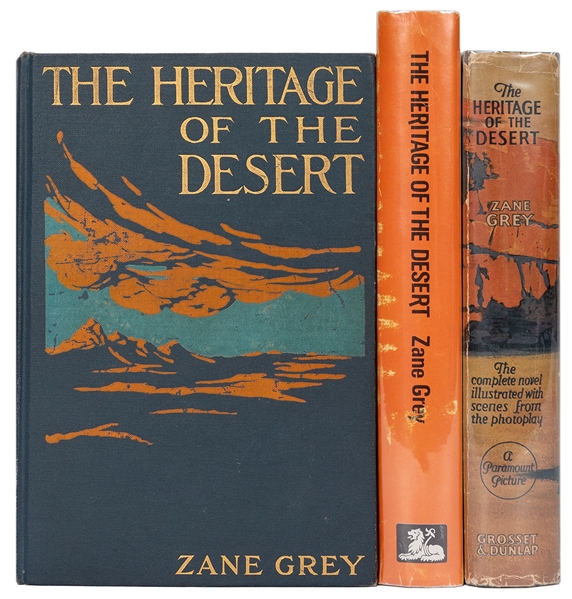

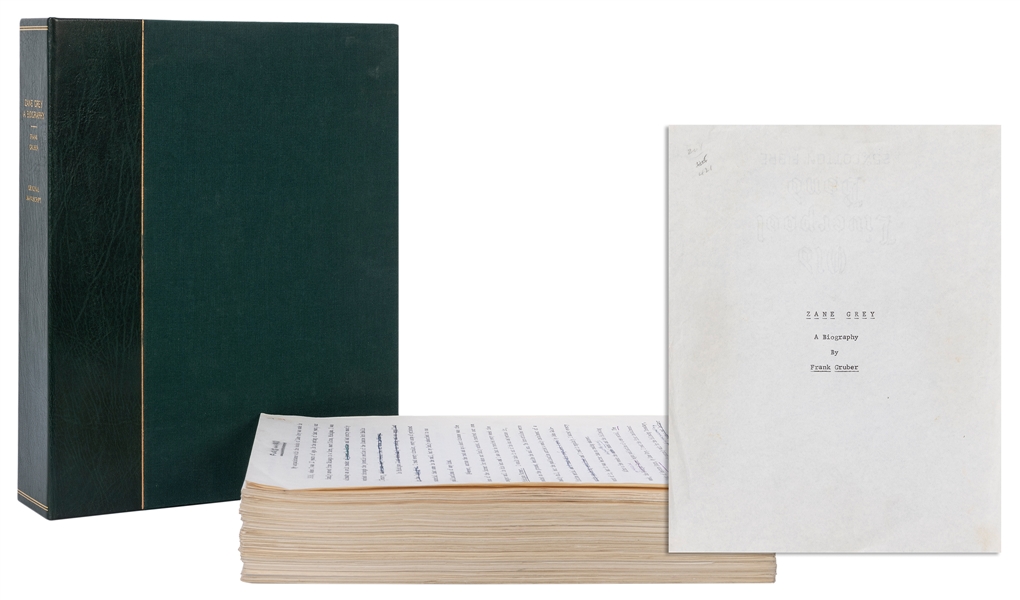
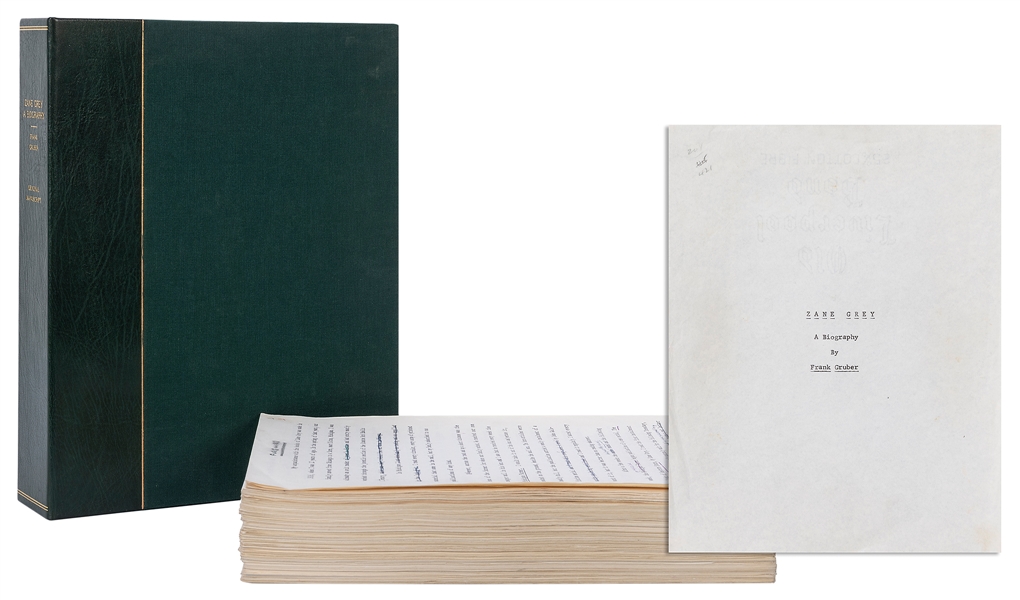
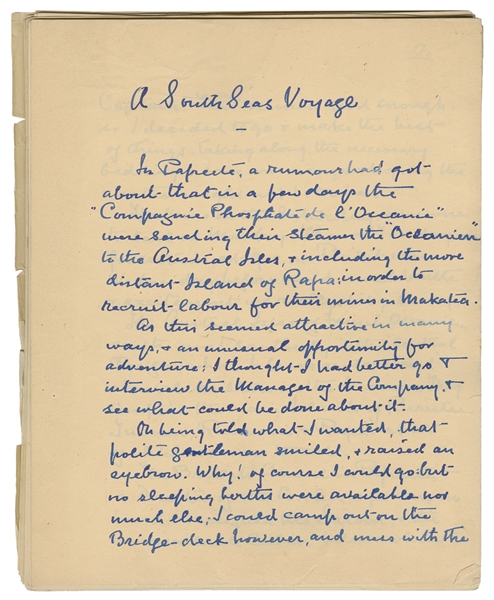


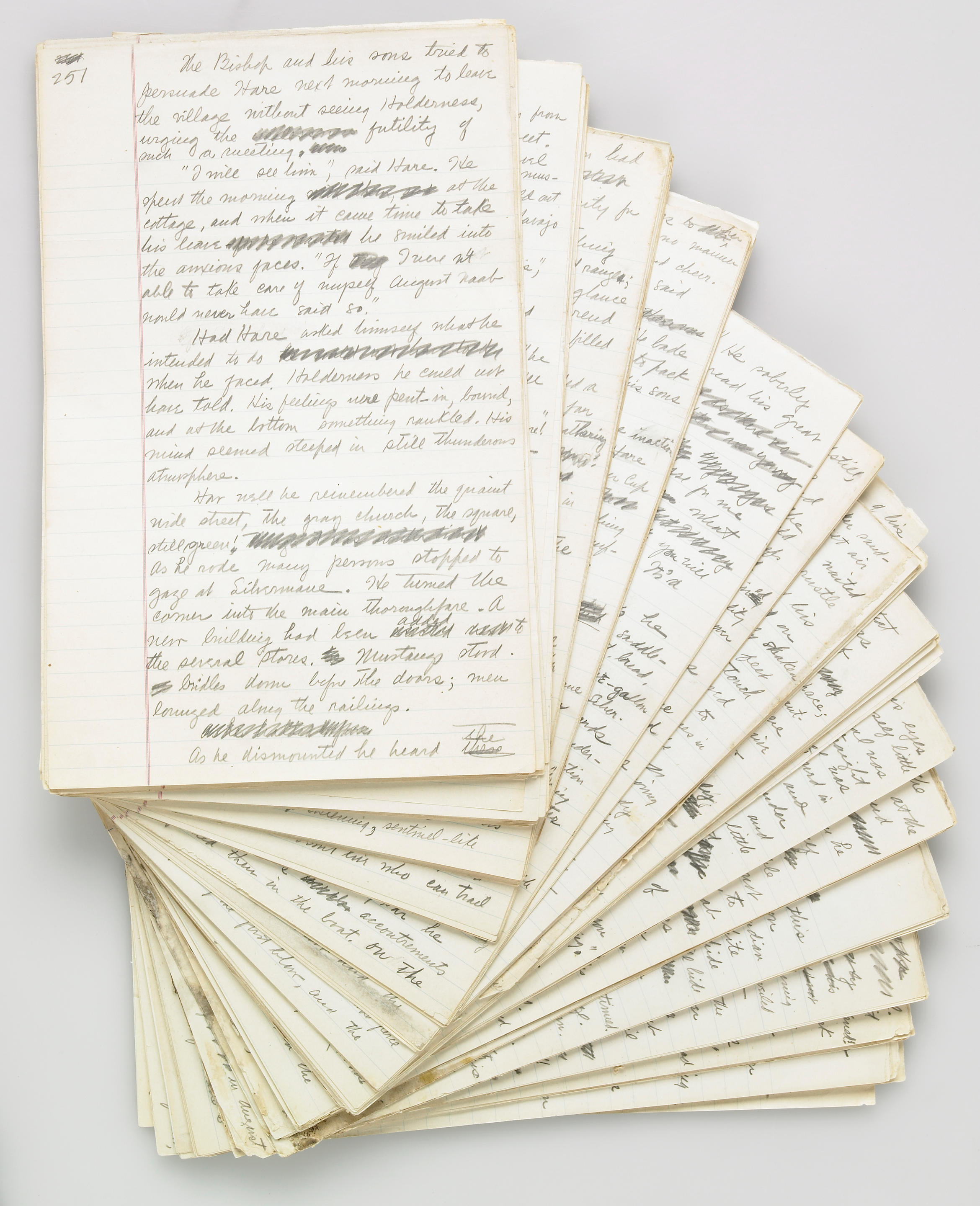





Testen Sie LotSearch und seine Premium-Features 7 Tage - ohne Kosten!
Lassen Sie sich automatisch über neue Objekte in kommenden Auktionen benachrichtigen.
Suchauftrag anlegen